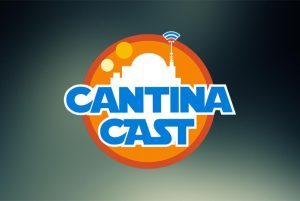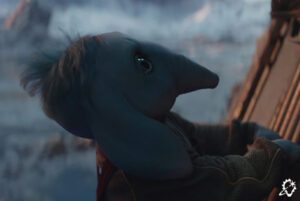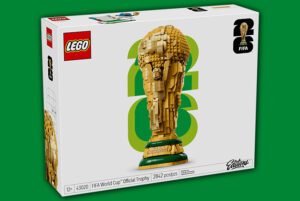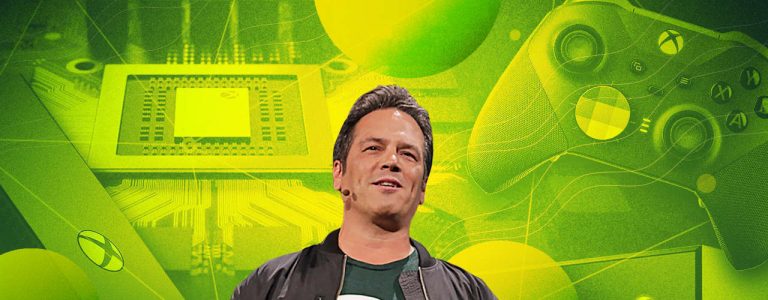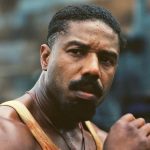Could Ganondorf’s return bring changes to the end of the timeline?
The Legend of Zelda’s timeline is long, complicated and notoriously messy. With 19 mainline entries, and one more on the way, it’s understandable that things have gotten a bit unwieldy. Even then, most timelines don’t include a split that generates three separate timelines rife with floods, parallel dimensions and resurrected demons.
The latest Zelda game, Breath of the Wild, simultaneously exists at the end of all three of these timelines, yet is strangely disconnected from each of them. The E3 2019 Breath of the Wild 2 trailer, however, suggests both it and its predecessor will finally have a much more concrete spot in this ever-growing legend.
Naturally, the reason why lies with the King of Darkness himself: Ganondorf.
The Return of Ganondorf
While not officially confirmed by Nintendo, the corpse seen in the announcement trailer for Breath of the Wild 2 is almost definitely Ganondorf from Twilight Princess – or at least what remains of him. There are several details that support this claim.
First, the cloth attached to the corpse in the Breath of the Wild sequel trailer features the symbol of the desert-bound Gerudo tribe. Ganondorf is not only a part of the Gerudo, he once ruled it as the only male born to the tribe every 100 years.
Furthermore, in Breath of the Wild, the Gerudo champion Urbosa says “It was written that Calamity Ganon once adopted the form of a Gerudo,” referring to Ganondorf from Ocarina of Time, who is ultimately the same Ganondorf in Twilight Princess.
Secondly, the corpse has a gash from which malice spews forth, and it’s in the exact same spot where Ganondorf’s wound was in Twilight Princess. This gash was first created when Ganondorf had been sentenced to death in the Child Link timeline, where Link went back in time following the events of Ocarina of Time to warn the King of Hyrule about Ganondorf’s evil plot. In the ceremonial Arbiter’s Grounds within the Gerudo Desert, the Ancient Sages drove a glowing sword through his chest, but with the Triforce of Power, Ganondorf survived and pulled out the sword and used it to kill the Sage of Water.
The remaining sages quickly used the Mirror of Twilight to banish Ganondorf to the Twilight Realm, a parallel world. After a long period of time, Ganondorf tricked the Twili Zant into freeing him from the Twilight Realm, and he returned to Hyrule. Ultimately, Link impaled him with the Master Sword at the end of Twilight Princess in the exact same spot he was previously stabbed, leading to Ganondorf’s death.

Above: Ganondorf at the end of Twilight princess, impaled by the Master Sword.
Below: A glowing hand clutching the corpse’s wound.
Lastly, the headdress Ganondorf wore in Twilight Princess resembles the one the corpse is wearing in the Breath of the Wild sequel trailer. While not a 1:1 match, almost every Zelda game has employed a different art style along with new visual interpretations of characters, so to change the headdress’ design would be par for the course with Nintendo. They both appear to be made of gold with a large yellow Topaz set in the center – Ganondorf’s favorite gem, according to the official The Legend of Zelda Encyclopedia.

Above: Ganondorf and his headdress in Twilight Princess.
Below: The corpse and its headdress in the Breath of the Wild sequel trailer.
There are some details on this corpse that don’t perfectly align with it belonging to Ganondorf. It includes numerous pieces of jewelry Ganondorf was not wearing in Twilight Princess – though it’s possible these were added to the corpse in a ceremonial fashion. Furthermore, the corpse’s red hair is much longer than Ganondorf’s in Twilight Princess, but this could largely be a stylistic choice.
While we could be completely wrong about this theory, it seems more likely than not that this is the corpse of Ganondorf from Twilight Princess.
Zelda Timeline 101
So if the corpse does belong to Ganondorf, why the heck does that matter to the Zelda timeline? Well, Nintendo previously indicated Breath of the Wild takes place at the end of all three branches of the official timeline, giving it a decidedly fluid (and confusing) quality.
Because Ganondorf from Twilight Princess did not exist in the other two timelines (at least not with the same chest wound), it suggests the Breath of the Wild sequel, and its direct predecessor, both take place in the same timeline as Majora’s Mask, Twilight Princess and Four Swords Adventures – the Child Link timeline.
Still confused? We’ve got you covered.

The official Zelda Timeline from The Legend of Zelda Encyclopedia (via Zelda Wiki).
Credit: Nintendo, Dark Horse.
Though fans have theorized about the timeline for years, it wasn’t until Hyrule Historia, a collection of Zelda artwork released in 2011, that fans were ever given a concrete Zelda timeline. It has since been revised to include newer games like A Link Between Worlds, Tri Force Heroes and Breath of the Wild, but the beginning of the timeline is straightforward enough: from Skyward Sword to Ocarina of Time, there are no deviations, and the story flows in a linear fashion.
Ocarina of Time is the crux upon which the rest of the timeline lies. At the end of that game, there are three potential outcomes hinging upon Link and Ganondorf’s final battle.
The Adult Link Timeline
In the Adult Link timeline, Link defeats Ganon and returns to the past, leaving this world hero-less when Ganondorf eventually returns. As a result, the gods flood the world to stop him: this timeline includes The Wind Waker, Phantom Hourglass and Spirit Tracks.
The Fallen Hero Timeline
In the Fallen Hero timeline, Link is defeated by Ganon, so Zelda and the Seven Sages of Hyrule seal Ganon and the Triforce in the Sacred Realm as a last resort. Eventually, Ganon turns the Sacred Realm into the Dark World, and escapes to conquer Hyrule in A Link to the Past. The rest of this timeline includes Link’s Awakening, Oracle of Seasons and Oracle of Ages, A Link Between Worlds, Tri Force Heroes, The Legend of Zelda and Zelda II: The Adventure of Link.
The Child Link Timeline
The Child Link timeline returns to when Link was a kid in Ocarina of Time, except instead of the events of that game unfolding, he warns the King of Hyrule about Ganondorf’s evil plot, resulting in Ganondorf being sentenced to death. Ultimately, he’s injured and imprisoned in the Twilight Realm instead. This young Link goes on to save Termina in Majora’s Mask, and one of his descendants is the hero that defeats Ganondorf once again in Twilight Princess. Some time later, the events of Four Swords Adventures occur.
According to Hyrule Historia, the Ganondorf that appears in Four Swords Adventures is a new Ganondorf born to the Gerudo tribe: this Ganondorf steals a powerful Trident from an ancient pyramid. He transforms into the beastly Ganon, and is ultimately sealed by the Four Sword. Though a mural in the Breath of the Wild sequel trailer depicts someone who resembles Ganondorf riding a horse and wielding a trident, it’s not likely this short-lived Ganondorf has anything to do with the sequel to Breath of the Wild, unlike the one who died in Twilight Princess.
Breath of the Wild’s Place in the Timeline
With all this split-timeline nonsense, where does that leave Breath of the Wild and its sequel? In 2018, Nintendo updated its official Japanese website with a complete Zelda timeline that includes Breath of the Wild. According to this site, the latest Zelda game vaguely exists at the end of all three timelines. In an interview with Famitsu (translated by Siliconera), series producer Eiji Aonuma was asked about this addition, and said “Well of course it’s at the very end. But, I get what you’re asking, it’s which timeline is it the end of?”
“
“Hyrule’s history changes with time” – Eiji Aonuma
To this, Breath of the Wild’s director Hidemaro Fujibayashi said “That’s up to the player’s imagination, isn’t it?”
“Hyrule’s history changes with time,” responded Aonuma. “When we think of the next game and what we want to do with it, we might think, ‘Oh, this’ll fit well,’ and place it neatly into the timeline, but sometimes we think, ‘Oh crap,’ and have to change the placement. Actually, the decided history has been tweaked many times.” Even between the releases of Hyrule Historia and the Zelda Encyclopedia, the timeline placement of Link’s Awakening and the Oracle games has been swapped, showcasing the timeline’s fluidity.
“Lately within the company, a term called ‘New Translation’ has cropped up,” said Fujibayashi. “Strictly speaking, we don’t change it, but rather new information and truths come to light.”
So while Breath of the Wild currently exists long after all of the timelines, it appears Nintendo is leaving quite a bit of wiggle room to eventually place it somewhere more neatly. The events discussed in Breath of the Wild span a huge period of time. Early on, a technologically advanced civilization defeated Calamity Ganon. Their descendents attempted to do the same 10,000 years later and failed. At this point, Link was nearly killed and placed in the Shrine of Resurrection for 100 years until he was strong enough to face Calamity Ganon. Link ultimately defeated Calamity Ganon with the help of Princess Zelda.
Even before its creators revealed they had set Breath of the Wild at the end of the three timelines, fans noticed it had elements of them all immediately after the game was released. Some evidence placed it in the Young Link timeline long after Twilight Princess, as the Hero of Twilight is referenced by Zelda in one of the game’s memories, and ruins of the Arbiter’s Grounds can be found in the Gerudo Desert.
However, there’s also evidence that suggested elements of the Adult Link timeline impacted the game. Breath of the Wild included the bird-like Rito tribe: by the time of The Wind Waker, they had evolved from the water-bound Zora peoples. Breath of the Wild also included Wind Waker’s Korok race, who evolved from the elf-like Kokiri from Ocarina of Time. With so much time passing between the ends of all three timelines and the beginning of Breath of the Wild, it’s plausible to assume these races managed to evolve even outside of The Wind Waker’s Adult Link timeline.
Some have come to refer to Breath of the Wild’s place in the timeline as the “Era of Myths,” where essentially all of the preceding games can be interpreted as longstanding legends without any evidentiary basis. However, if our theory about the corpse is correct, that would solidly lock Breath of the Wild and its sequel into the end of the Young Link timeline, and likely preclude it from the other two. This could easily be interpreted as “new information and truths” coming to light.
Then again, maybe Breath of the Wild and its sequel will both remain vaguely attached to all three timelines, perhaps somehow converging them into a single, unified timeline. How that would work is anyone’s guess. The only hint of evidence we have places it in the Young Link timeline, but we’ll have to wait for more information to see if a convergence is in the cards.
Breath of the Wild 2’s Story
As Aonuma and Fujibayashi said, the official history within The Legend of Zelda has changed many times, and will likely continue to do so long after The Legend of Zelda: Breath of the Wild 2 has been released. The Zelda team has always prioritized gameplay over story, and while this latest trailer suggests the next game may focus more on its narrative than Breath of the Wild did, it will likely still not be a top priority.
So what could come of Breath of the Wild 2’s story? Well, it appears the Calamity Ganon Link and Zelda defeated in Breath of the Wild was simply a collection of malice that originated from this corpse, and the two will now have to defeat the source of this evil. At some point, it can be assumed Ganondorf’s body was taken far beneath Hyrule Castle, or somewhere else underground, and sealed with the glowing hand seen in the trailer. The end of this trailer shows Hyrule Castle beginning to rise from the earth, potentially creating Ganon’s Castle as it previously existed in Ocarina of Time.
There are no more shrines, dungeons or Divine Beasts to be seen in this sequel’s Hyrule, at least they can’t be found in the trailer. It’s possible other areas of the map will arise from the ground like Hyrule Castle and change the landscape considerably – many fans hope this means fully fledged dungeons will appear in the Breath of the Wild sequel where they didn’t exist before.
Only time will tell if our theories about Ganondorf and Breath of the Wild 2 are accurate, but regardless of what happens, The Legend of Zelda’s timeline will likely continue to be as dynamic as it is convoluted.
Everything We Know About Breath of the Wild 2
For more on the Breath of the Wild sequel, check out everything we know about Breath of the Wild 2, including its reveal at the end of the E3 2019 Nintendo Direct, how Aonuma neither confirmed nor denied potential co-op or a playable Zelda, how younger members of the team were inspired by Red Dead Redemption 2 and much more.
You can also read about what we want from Breath of the Wild 2.
Have a tip for us? Want to discuss a possible story? Please send an email to [email protected].
Colin Stevens is a news writer for IGN and he wrote over 2,200 words based on a single teaser because Breath of the Wild is his favorite game of all time. His first tattoo was a Sheikah eye on his back, and he doesn’t regret it. Follow him on Twitter.

